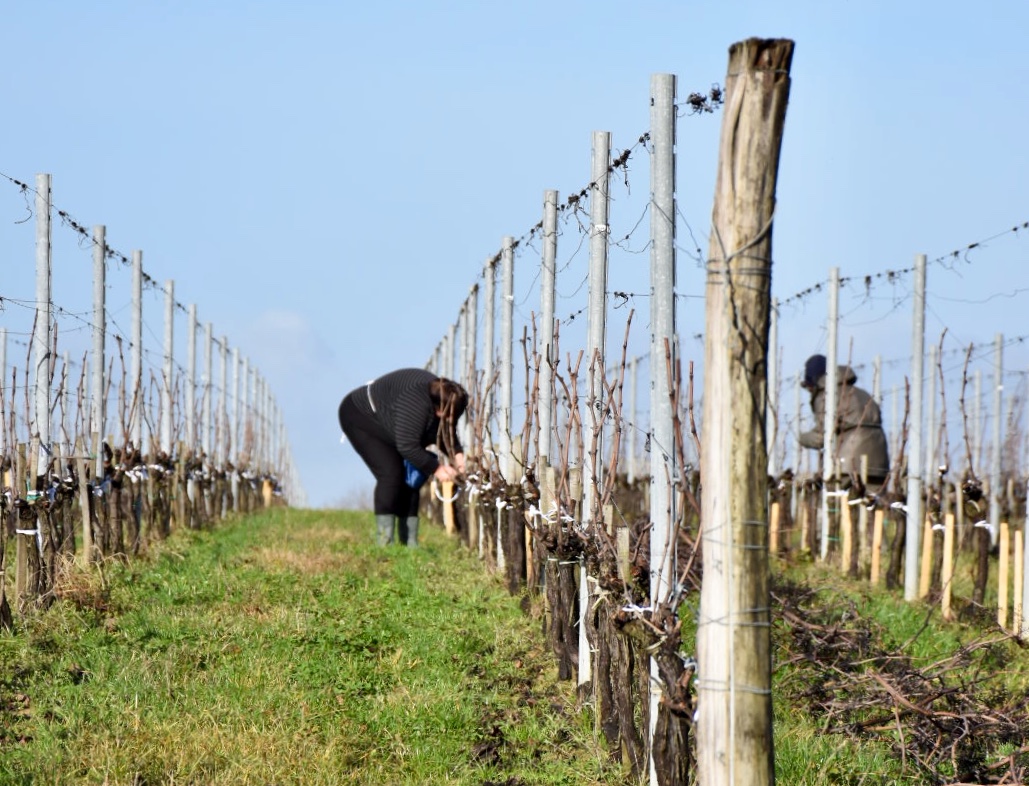The pruning of the vine is a delicate process. Discover the different styles of pruning grape vines that exist and how we prune the vine here at Chateau Suau.
If you’ve been following our blog you’ll know that the life of a wine producer involves making many decisions throughout the wine growing process, be it in the cellar or in the vineyard. There are many parameters which can be adjusted throughout the year, and pruning the vines is one of these.

There are many different pruning methods used around the world and each region has its own way of doing things, depending on its grape varieties and the wines that will be made.
At Château Suau we prune our vines in what is called the Guyot Poussard style.
Before going into detail, let’s look at why vines are pruned. This stage of vineyard work is the longest and it can stretch across several months, depending on the size of the estate. It is done after harvest, when the leaves have fallen and the vine is resting. At Château Suau we start pruning in November and finish in February.
Why are vines pruned?
The first point to understand is that the vine is a liana (creeper) which when left to its own devices tends to spread and climb wherever it wants, making efficient farming very difficult. Thus the vine has to be managed in order for it to grow alongside others. Pruning encourages the vine shoots to grow in a specific, chosen direction.
In addition to this, vines only produce grapes when they are sufficiently vigorous and restrained: there will only be grapes on the two year-old wood from which the one year-old branches grew, so we prune in order to have good quality grapes (and thus good quality wines), by restricting their quantity.
Pruning styles
As mentioned above, at Château Suau we prune our vines in the Guyot-Poussard style (named after Dr. Jules Guyot). We have erected posts and wires in each row of our vineyards for the vines to grasp (something they do well if given the means). Each vine is pruned in a V shape, leaving only two canes (arms) on opposite sides.
We prune each of these canes to leave 8 or 9 buds. The other canes are cut almost right back, leaving only one or two buds. This technique is time-consuming but it has several advantages. We can use it on our most vigorous, fruit-bearing vines and still get premium quality bunches. Pruning in this way shapes the vine and means our harvesting machines can pass through the rows.
There are many other pruning styles, such as simple Guyot where only one cane is kept. In Beaujolais the gobelet style of pruning is common; posts and wires are not needed as the vine has four or five short arms which grow upwards. Sometimes the vineyard pruning techniques adopted are ancient – indeed, the gobelet style dates back to Roman times.
Incredible sizes in the four corners of the world:
The diversity of the modes of size is infinite, we have prepared an unusual selection.
In Burgundy at Domaine Leroy, let the vines go up, with zero trimming, to avoid any stress of the vine, we can easily recognize these parcels in the air disheveled in the landscape.
In Japan, the variety Koshu requires a size pergola not always practical.
In Greece, some indigenous grape varieties are cut into bird’s nest, just look at the feet to understand its name.
If you go to the Canary Islands, some vines are rimmed with stone to protect them from the wind and the size is excessively low.
As many fabulous landscapes as grape varieties and regions, the size is rocked history.

